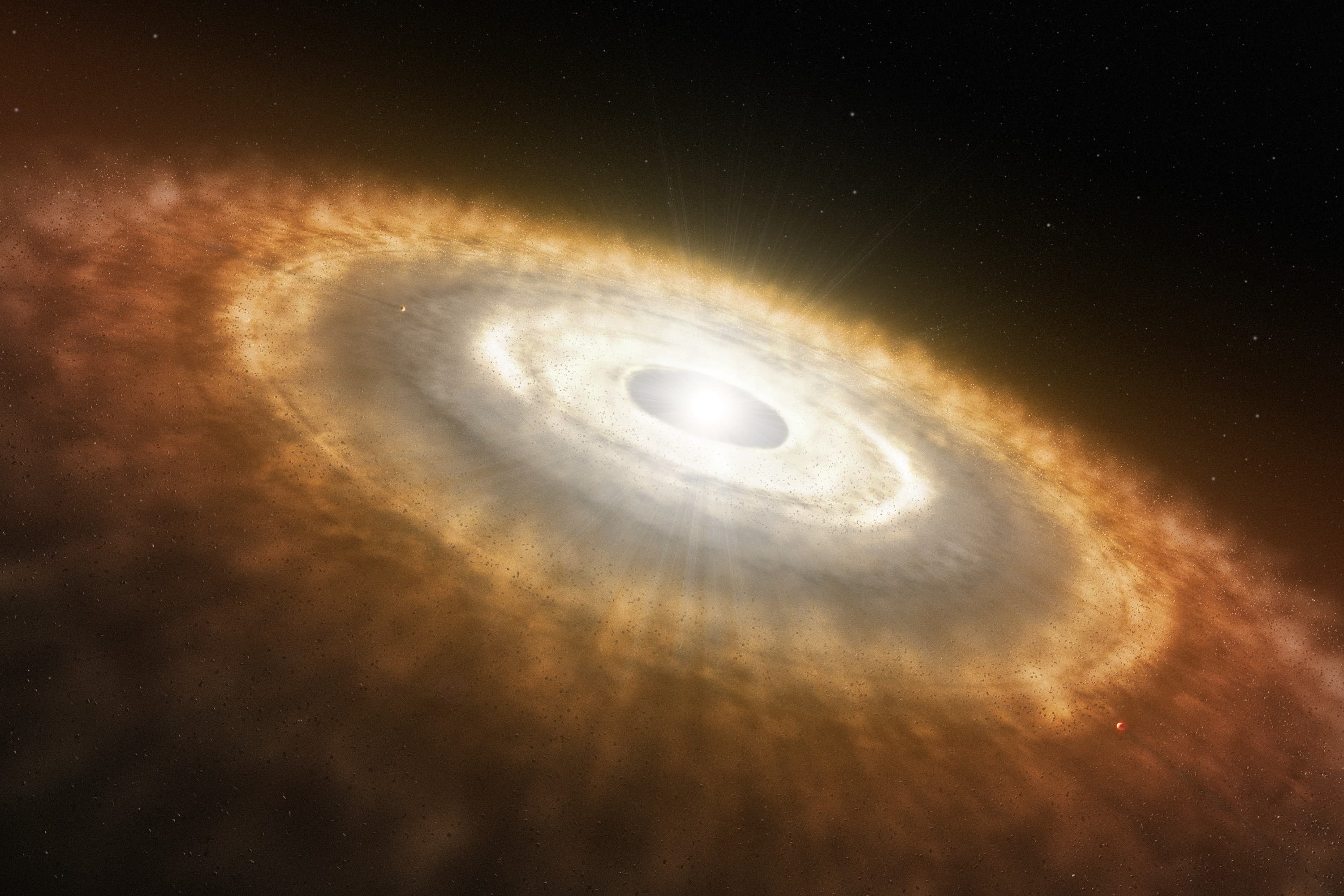Does the specific location of a solar system within a galaxy affect the solar system’s structure? Like does distance from the centre affect how big the star is, or what kind of planets form?
Stuart, London
Indirectly yes. You have more gas on the outskirts than in the central regions. But there’s more to it than a simple relation between the distance from the galactic core and the star mass. Stars form in giant molecular clouds, the hydrogen gas condenses and if the cloud is big enough it will collapse. The collapse will be enough to produce nuclear fusion (otherwise it will end up being a brown dwarf,i.e. A failed star) and a star will be born.
Galaxies tend to form from the inside out, with the gas necessary for star formation being accreted from other galaxies (galactic vampirism) or from the intergalactic medium, adding itself to the outskirts of the Galaxy.
The vast majority of new stars are thus formed on the outside, either in the disk, for spiral galaxies or around dust lanes in elliptical galaxies. This is not the case during major mergers events, when two galaxies collide, changing their shape and often producing significant star formation episodes.
And what about planets?
That’s a million dollar question. We don’t know exactly how planets form, just an indication on what’s necessary to have planetary formation.
It is believed that it takes planet between 10 and 100 million years to form after their star starts to shine. The planetary system needs to be far enough from other stars to avoid significant disruption, and yet close enough to the giant molecular cloud.
Missions like TESS and the James Webb Space Telescope which will launch in the next few years should hopefully clarify some of the unknown in planetary formation.

